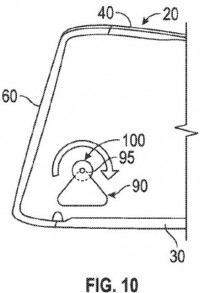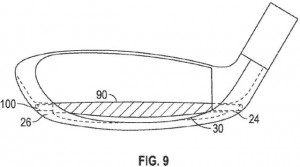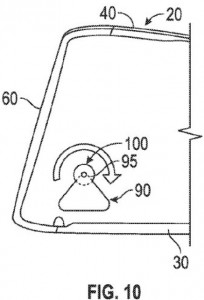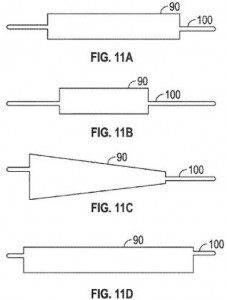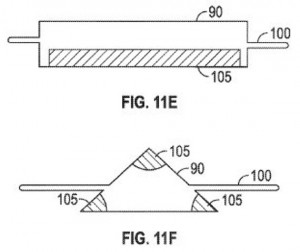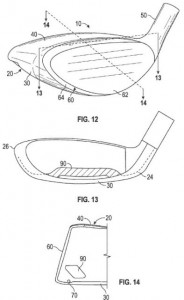Nostradawsey’s Predictions for Callaway Golf’s Drivers and/or Fairway Woods of 2016
Forget about the first half of 2015 as we are unlikely to see any totally new product launches containing “technologies,” used loosely, that we haven’t seen before. Let’s focus on what may be in store for the later half of 2015, and more likely in 2016, or later.
The fact is that golf equipment companies are under tremendous pressure to introduce products containing “new” technologies that have not been incorporated into modern golf clubs, and then hype them as the next breakthrough that golfers can’t live without. I say “bring it on,” after all it is what keep us golf gear heads talking and spending money.
So, looking into my crystal ball (and thousands of patent applications), Nostradawsey predicts that within the next 18 months we witness the launch of a Callaway driver incorporating a rotating weight bar, something like:
The technology is explained as:
In another embodiment of the present invention, shown in FIGS. 8 and 9, the body 20 of the golf club head 10 includes a weight bar 90, which is affixed within the interior of the body 20 only at a heel side 24 and toe side 26 of the golf club head 10, effectively bridging the entire sole 30. This structure allows for activation of the face component 60 and the sole 30 without having an excessive effect on mass properties, as the weight bar 90 acts as a torsion spring during impact of the golf club head 10 with a ball. In some embodiments, the weight bar 90 is integrally cast with the crown 40 and the heel and toe sides 24, 26, and the sole 30 is affixed after the casting is complete, though in alternative embodiments the weight bar 90 may be separately constructed and then affixed within the body 20 at the heel and toe sides 24, 26 via mechanical fasteners, epoxy, welding, brazing, or any other methods known to a person skilled in the art.
In the embodiment shown in FIG. 10, the weight bar 90 is movably affixed to the heel and toe sides 24, 26 with a pin 100 or other moving element, and the weight bar 90 has a polygonal shape and is affixed to the pin 100 at one edge 95, such that rotating the pin 100 anywhere from 1 to 359 degrees moves the majority of the mass of the weight bar 90 to different locations within the body 20, thus adjusting the location of the golf club head’s 10 CG. Different weight bar 90 and pin 100 combinations are shown in FIGS. 11A-F, and may include one or more cross-sectional shapes and/or high-density portions or inserts 105. Once the desired CG location is achieved, the pin 100, and thus the weight bar 90, can be temporarily fixed in place by any means known to a person of ordinary skill in the art, including mechanical fasteners and/or removable adhesives, or permanently fixed in place via techniques such as welding, brazing, and/or the use of permanent adhesives.
Hedging his bet, Nostradawsey predicts that if we don’t see the above technology, we will at least see the following modified “elevated” version of the internal standing wave technology that they love so much.
If Nostradawsey’s predictions are wrong he will retire from the business of predicting future golf equipment (as soon as someone purchases this blog for at least $250k)!
Stay tuned for more of Nostradawsey’s predictions.
Dave Dawsey – Using Competitive Intelligence to Predict the Future of Golf Equipment
PS – follow me on Twitter (@GolfPatents) and sign-up HERE to receive posts via email.
PPS – Yes, Nostradawsey is a play on Nostradamus, substituting the name of a not so clever patent attorney. If you are not familiar with Nostradamus, please slowly turn off your computer and pick up a book.
PPPS – If you like what we are doing, please considering helping us out and make your online gear purchases through our Amazon affiliate link. Every little purchase helps us keep the site up and running! Thanks.

